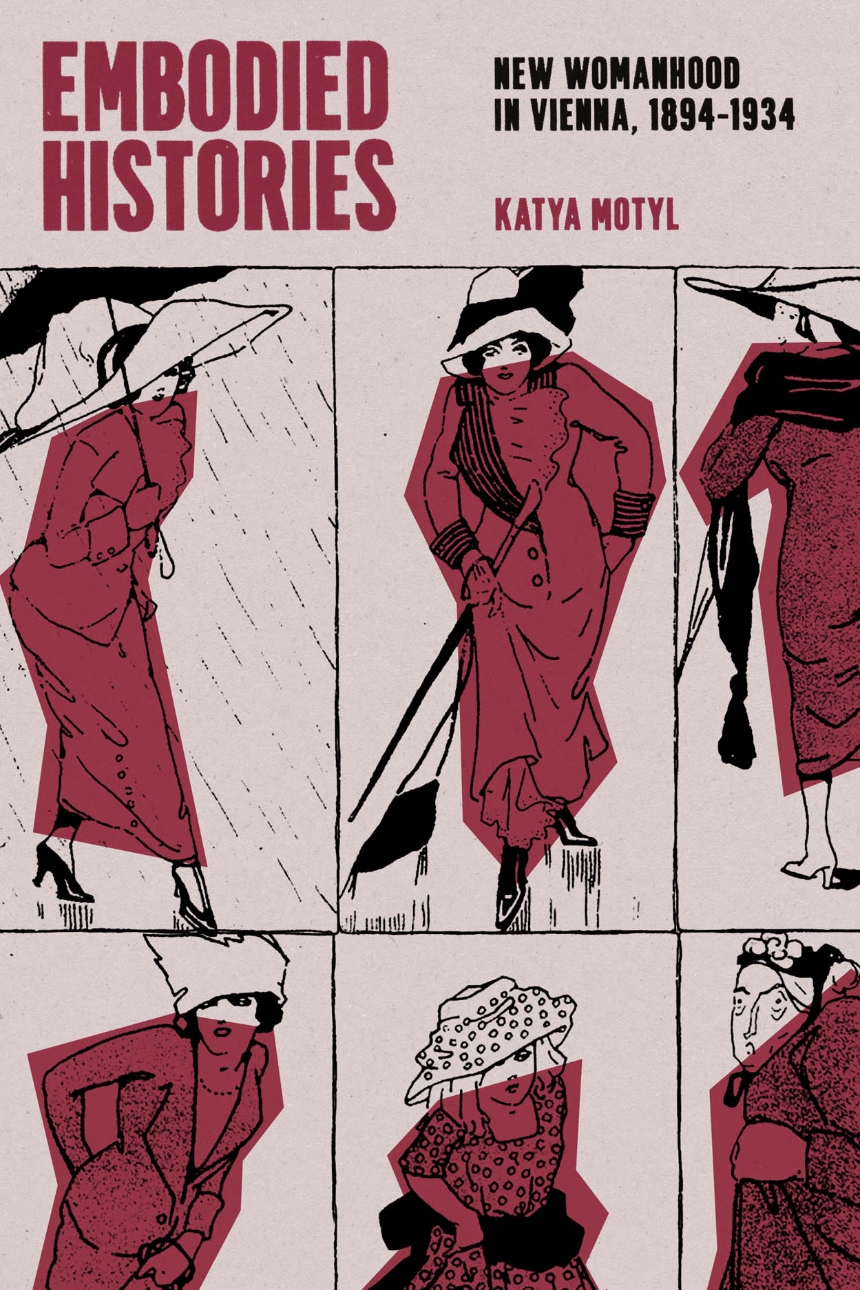Embodied Histories
New Womanhood in Vienna, 1894–1934
Explores the emergence of a new womanhood in turn-of-the-century Vienna.
In Embodied Histories, historian Katya Motyl explores the everyday acts of defiance that formed the basis for new, unconventional forms of womanhood in early twentieth-century Vienna. The figures Motyl brings back to life defied gender conformity, dressed in new ways, behaved brashly, and expressed themselves freely, overturning assumptions about what it meant to exist as a woman.
Motyl delves into how these women inhabited and reshaped the urban landscape of Vienna, an increasingly modern, cosmopolitan city. Specifically, she focuses on the ways that easily overlooked quotidian practices such as loitering outside cafés and wandering through city streets helped create novel conceptions of gender. Exploring the emergence of a new womanhood, Embodied Histories presents a new account of how gender, the body, and the city merge with and transform each other, showing how our modes of being are radically intertwined with the spaces we inhabit.
In Embodied Histories, historian Katya Motyl explores the everyday acts of defiance that formed the basis for new, unconventional forms of womanhood in early twentieth-century Vienna. The figures Motyl brings back to life defied gender conformity, dressed in new ways, behaved brashly, and expressed themselves freely, overturning assumptions about what it meant to exist as a woman.
Motyl delves into how these women inhabited and reshaped the urban landscape of Vienna, an increasingly modern, cosmopolitan city. Specifically, she focuses on the ways that easily overlooked quotidian practices such as loitering outside cafés and wandering through city streets helped create novel conceptions of gender. Exploring the emergence of a new womanhood, Embodied Histories presents a new account of how gender, the body, and the city merge with and transform each other, showing how our modes of being are radically intertwined with the spaces we inhabit.
Reviews
Table of Contents
Introduction: She Stood Outside, Listening to Music
1. New Moves: Flânerie, Urban Space, and Cultures of Walking
2. New Shapes: The Masculine Line, the Starving Body, and the Cult of Slimness
3. New Expressions: Emotion, the “Self,” and the (Kino)Theater
4. New Sensuality: A Sexual Education in Desire and Pleasure
5. New Visions: Reproductive Embodiment and the Medical Gaze
Epilogue: Are There Even Women?
Acknowledgments
Notes
Bibliography
Index
1. New Moves: Flânerie, Urban Space, and Cultures of Walking
2. New Shapes: The Masculine Line, the Starving Body, and the Cult of Slimness
3. New Expressions: Emotion, the “Self,” and the (Kino)Theater
4. New Sensuality: A Sexual Education in Desire and Pleasure
5. New Visions: Reproductive Embodiment and the Medical Gaze
Epilogue: Are There Even Women?
Acknowledgments
Notes
Bibliography
Index
